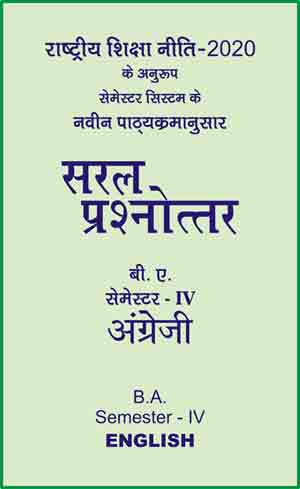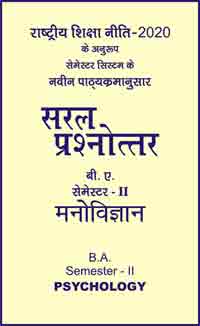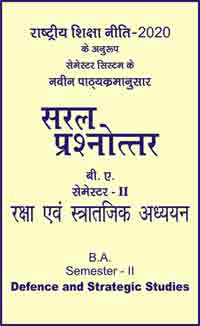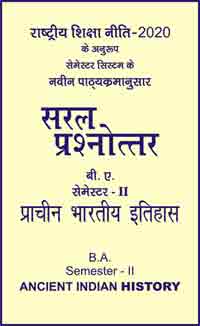|
बी ए - एम ए >> बीए सेमेस्टर-4 अंग्रेजी बीए सेमेस्टर-4 अंग्रेजीसरल प्रश्नोत्तर समूह
|
5 पाठक हैं |
|||||||
बीए सेमेस्टर-4 अंग्रेजी - सरल प्रश्नोत्तर
Unit-II
Chapter - 3
Using Tools of Technology for Translation
Brief Introduction
Translation tools, also known as CAT (computer-aided translation), enhance the productivity and consistency of translators. They usually include several component technologies in a single integrated workbench, such as document editors, terminology management and transliation memory. The tools have evolved along with the computing and networking industries, first as stand-alone software to be used on a single computer, then client-server tools to be used on a company network, and most recently to cloud-based tools delivered via the internet.
Interest in translation technology grew since the 1950s, when the needs for translation started to expand exponentially while the productivity of translators remained constant. This created an expensive and time-consuming bottleneck in the workflow of corporations, a problem waiting to be addressed. Since the mid-sixties, companies looked for a method to use computers to aid translators, especially to reuse previous translations by aligning parallel bilingual texts.
Recent years have seen a number of new translation tools enter the market and a number of mergers and acquisitions. In 2009, Google entered the fray with the release of Google Translator Toolkit. Other modern CAT tools of note are memoQ and Wordbee.
Machine translation is the process of automatically translating content from one language to another without any human input.
Translation was one of the first applications of computing power, starting in the 1950s. Unfortunately, the complexity of the task was far higher than early computer scientists' estimates, requiring enormous data processing power and storage far beyond the capabilities of early machines.
It was only in the early 2000s that the software, data, and required hardware became capable of doing basic machine translation. Early developers used statistical databases of languages to "teach" computers to translate text. Training these machines involved a lot of manual labor, and each added language required starting over with the development for that language.
In 2016, Google had an experimental team testing the use of neural learning models and artificial intelligence (AI) to train machine translation engines. When the small team's methodology was tested against Google's main statistical machine translation engine, it proved far faster and more effective across many languages. In addition, it 'learned' as it was used generating constant improvement in quality.
Neural machine translation proved so effective that Google changed course and adopted it as their primary development model. Other major providers including Microsoft and Amazon soon followed suit, and modern machine translation became a viable addition to translation technology. Many translation and localization management solutions now incorporate machine translation capabilities into their platforms to support their users' workflows.
Automated translation refers to any automation built into a traditional computer-assisted translation tool (CAT tool) or a modern translation management system (TMS) to execute manual or repetitive translation-related tasks with minimal human intervention.
Triggers are built into content that tell the system it can be automated. This may include inserting commonly used text such as legal disclaimers into documents from a database like a content management system (CMS).
Automated translation may be used to automate the machine translation of text as a stage in the localization workflow. However, automated translation and machine translation are not interchangeable terms as they serve entirely different functions.
In other words, automated translation is about triggering the execution of manual or repetitive translation-related tasks with the help of technology. Automatic translation is simply another term for machine translation.
The 3 most common types of machine translation include:
Rule-based machine translation
The earliest form of MT, rule-based MT, has several serious disadvantages including requiring significant amounts of human post-editing, the requirement to manually add languages, and low quality in general. It has some uses in very basic situations where a quick understanding of meaning is required.
Statistical machine translation
Statistical MT builds a statistical model of the relationships between words, phrases, and sentences in a text. It applies the model to a second language to convert those elements to the new language. Thereby, it improves on rule-based MT but shares many of the same problems.
Neural machine translation
As mentioned above, the neural MT model uses artificial intelligence to learn languages and constantly improve that knowledge, much like the neural networks in the human brain. It is more accurate, easier to add languages, and much faster once trained. Neural MT is rapidly becoming the standard in MT engine development.
From basic MT use cases to enterprise machine translation neural MT is the most widely used type of machine translation today.
In general, the decision on which machine translation type you should use depends on :
The budget available : Neural MT is more expensive to train than statistical MT, but the quality improvement is well worth any cost difference. Many systems are deprecating their older statistical models in favor of neural learning,
The industry involved : Some industries demand complex and technical language that may require more sophisticated processing. Neural MT provides this.
The language pairs you need : Statistical MT is often sufficient for certain language pairs such as Latin-based languages with similar grammatical rules and syntax.
The amount of data you have : Neural MT requires the processing of large quantities of text for it to learn and for you to reap the benefits.
Internal vs customer-facing content : Customer-facing content, like marketing or sales materials that reflect brand quality, requires the most sophisticated combination of machine translation and experienced human translators doing post-editing. Basic employee communication or internal documentation may be able to be achieved by using basic machine translation when time and cost are factors.
Important Facts to Remembere
Machine translation refers to the use of intelligent software and technology to translate texts from one language to another without the need for human intervention. Originally, these systems were based on rules that used grammatical structures and bilingual dictionaries.
Machine translation refers to a purely automated translation system capable of converting source content into target languages in a matter of seconds.
Machine translation goes far beyond converting words from one language to another. At Pangeanic, when we speak of machine translation, we are referring to a process adapted to each context which improves machine translations based on human revisions, interpretations and corrections. Machine translation and its ability to implement a first stage of purely automated translation brings many positive aspects to any project requiring translation services. And the fact is that, as far as speed, volume and cost are concerned, MT has far surpassed human translators' capabilities.
For large quantities of texts, machine translation provides a first layer of automatic translation that will speed up the translation process and will allow organizations to save enormous amounts of time and money.
Machine translation may therefore be a very viable option from a financial point of view. If a professional translator is hired to work on the translation from scratch, the resulting bill is likely to be sky-high.
Automation offers the translation tools necessary for the system to constantly evolve without having to add more investment and resources as the volume of content to be translated increases.
Deep analysis tools can use drafts that provide machine translators with previously used phrases and concepts, taking advantage of a "translation memory" that can be customized for each specific user.
Machine Translation is the instant transformation of text from one language to another using artificial intelligence (AI) AI has tremendously continued to develop lately and it seems to have become more useful and smarter in translating some particular languages. It is very popular for individuals to translate the basic phrases and can be a valuable tool for professional translators and businesses alike to take advantage of. But, it is still limited, it is unable to understand a people's culture who use a particular language, neither other nuances including anecdotes and dialect, and cannot best express a sentence's meaning the way a human can. All of these combined reduce the accuracy of Machine translation.
Human Translation involves real brainpower, in the form of one or more translators translating the text manually. Human has the insights that can translate critical contexts with accuracy and in terms of grammar, human is more ethical and reliable. The ability to convert the texts to sound organic made human translators become a priority in the translation industry for serious business whether it is for individuals or companies.
Use of machine translation in online chats, real-time auctions.
Machine translation is less suited to the literary translation of novels and poems.
|
|||||














